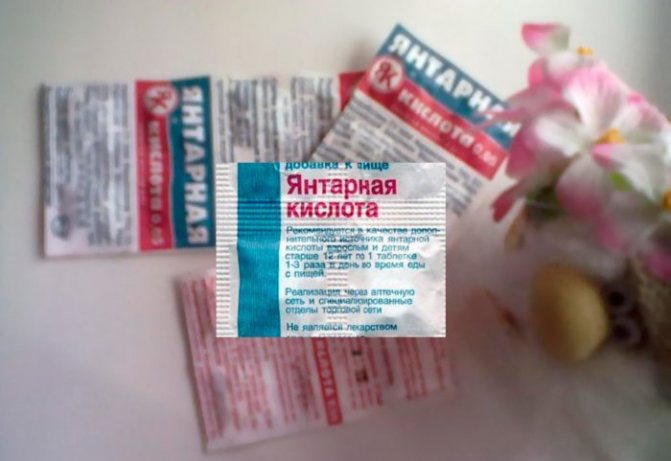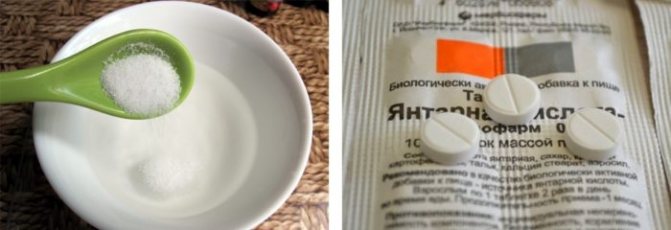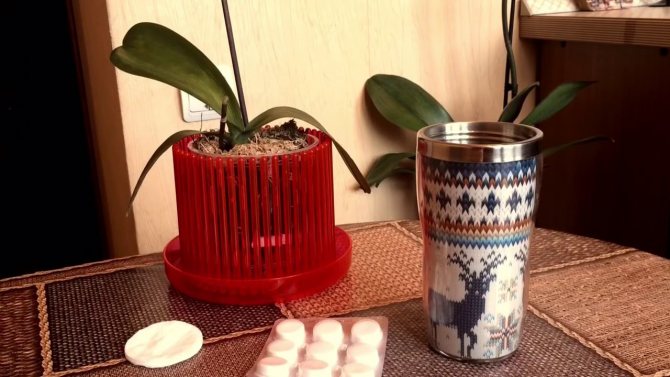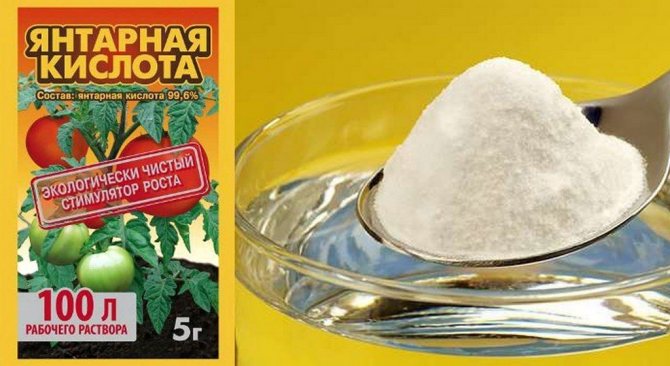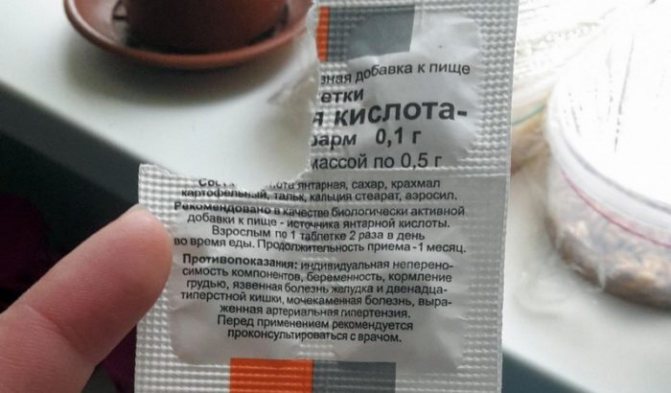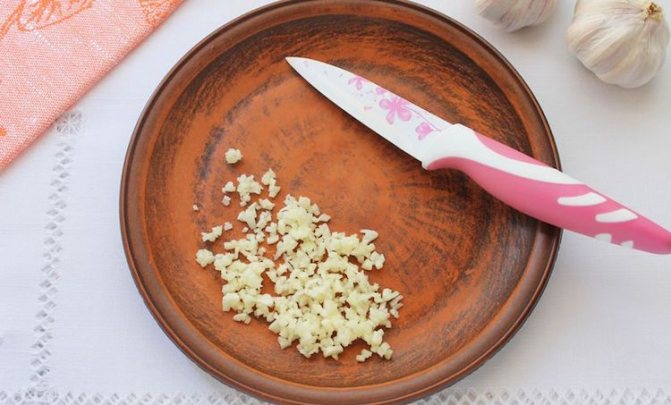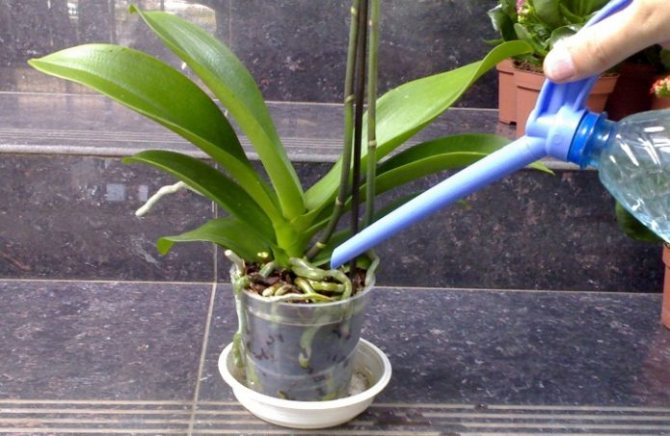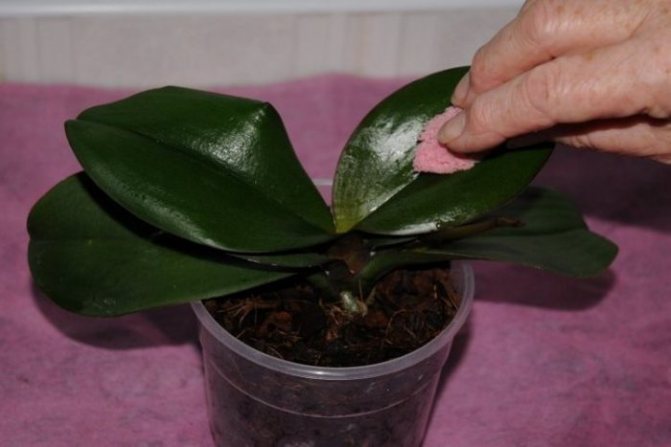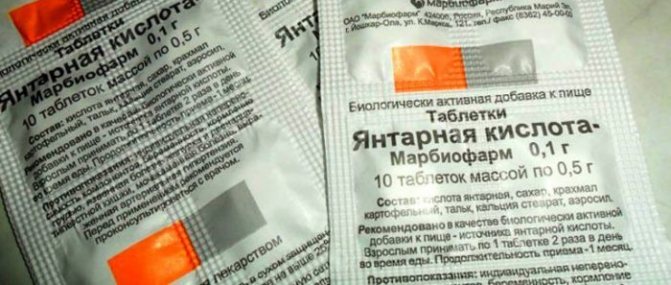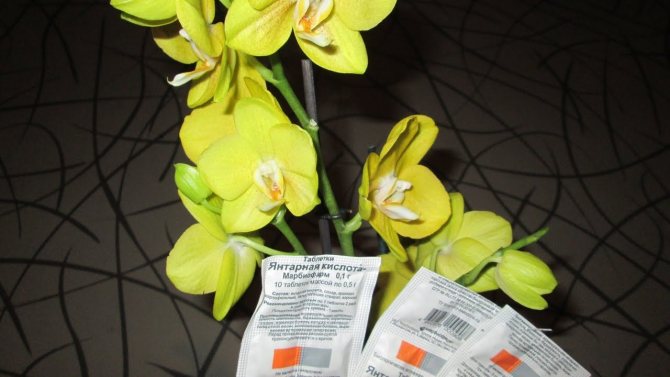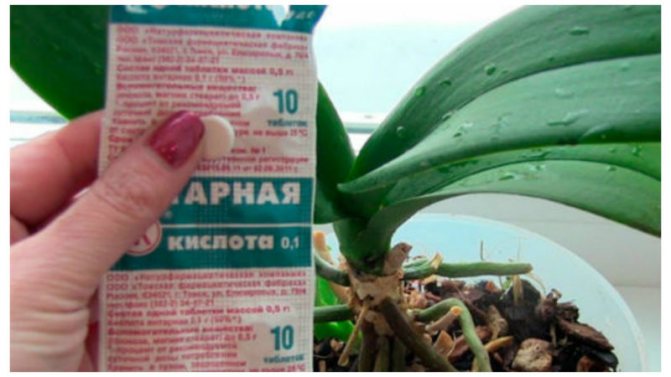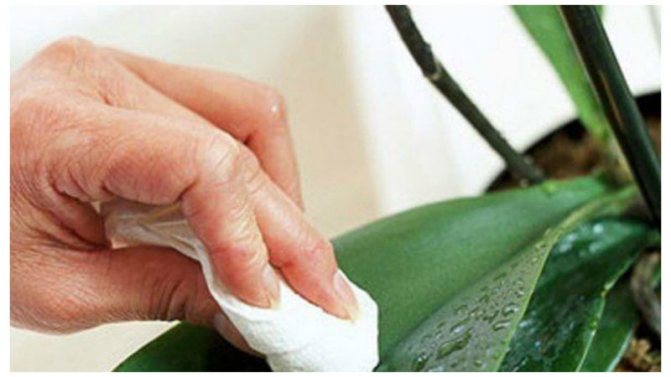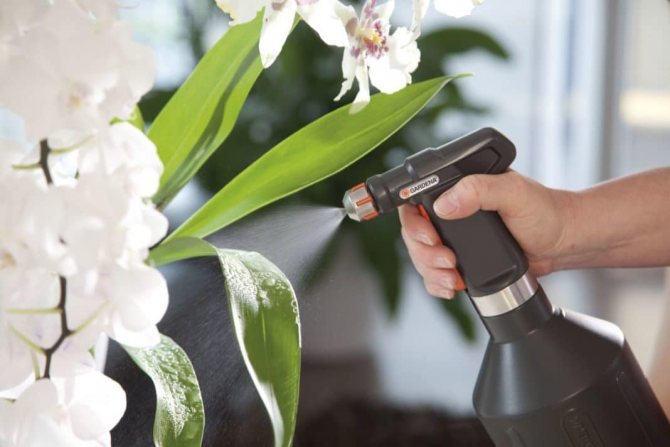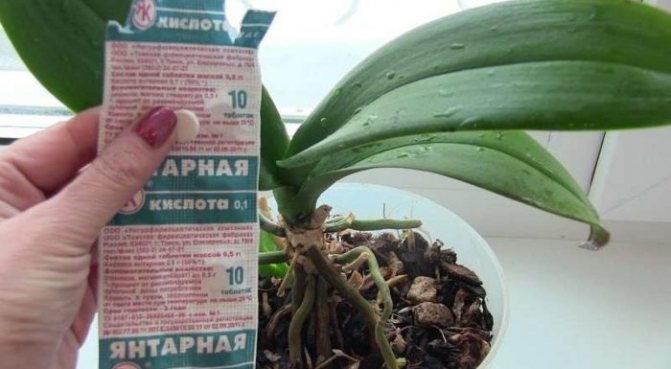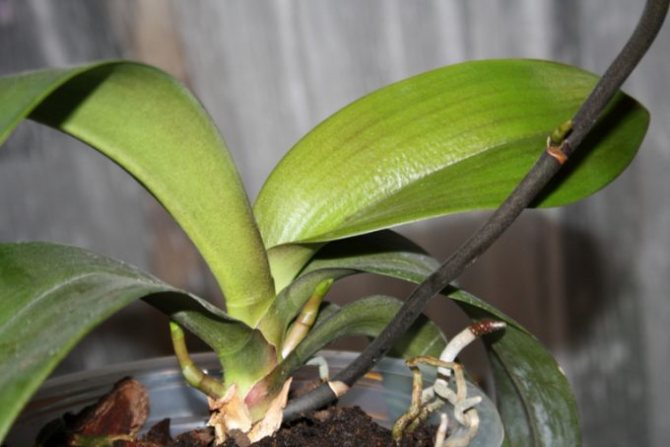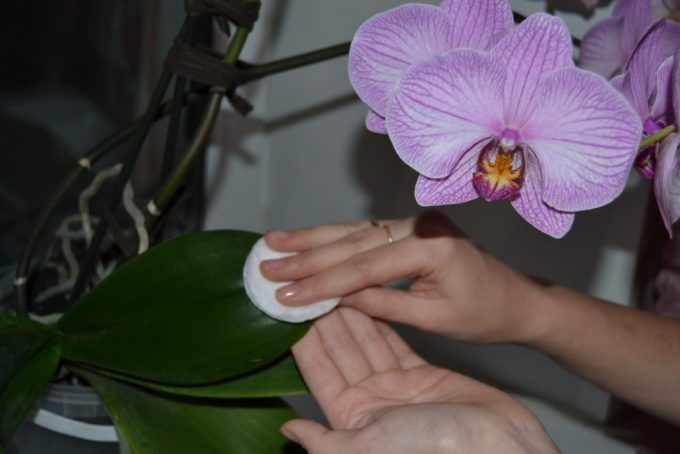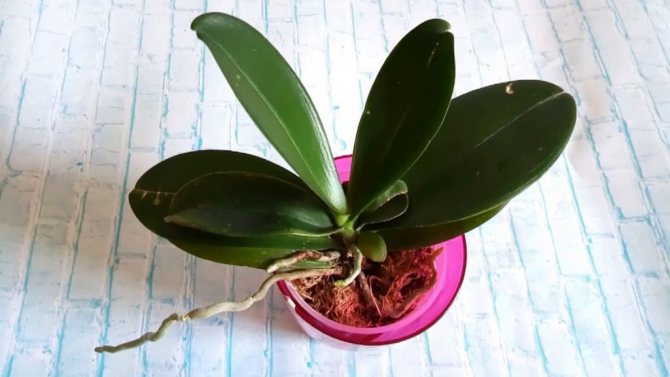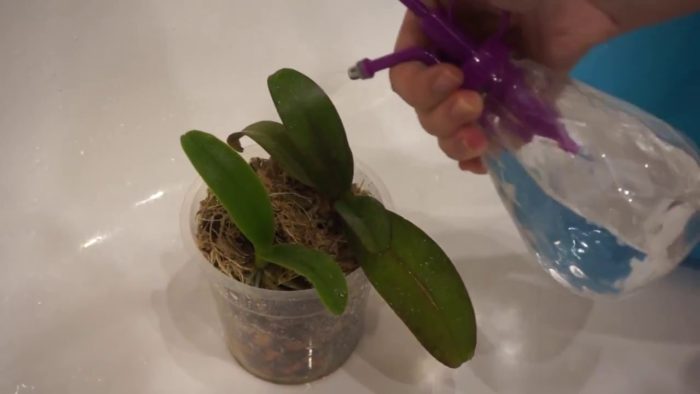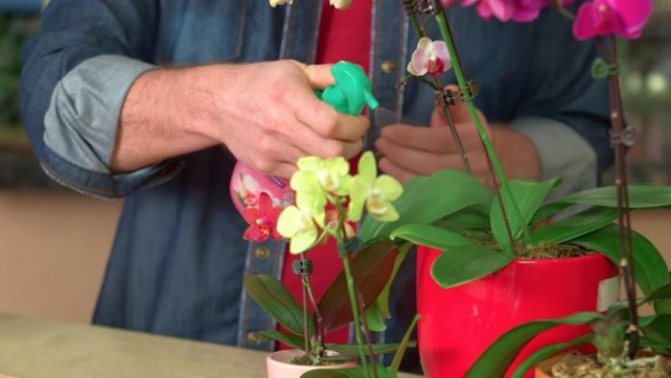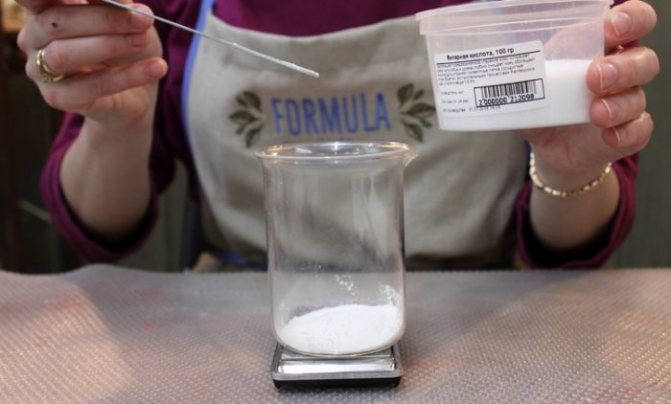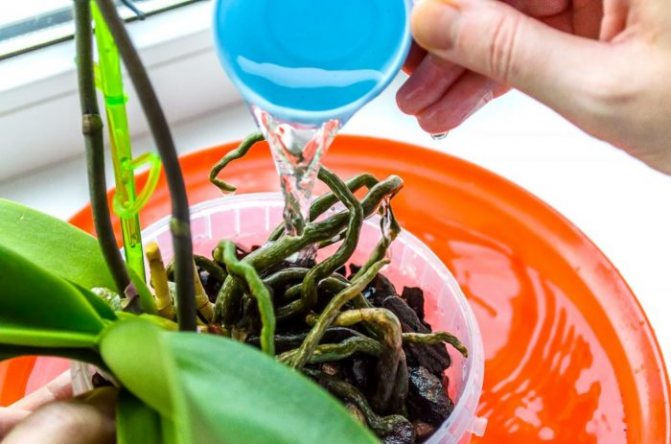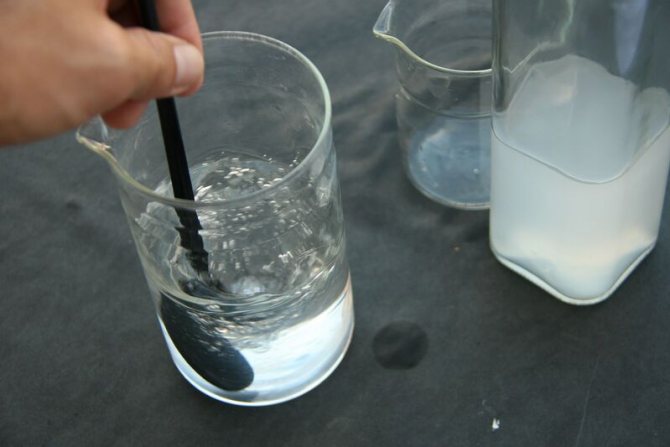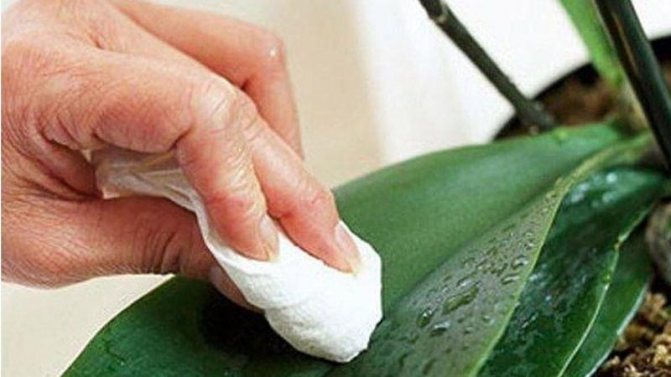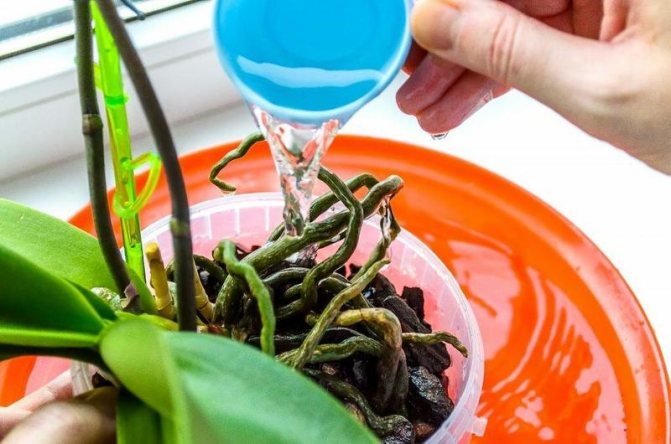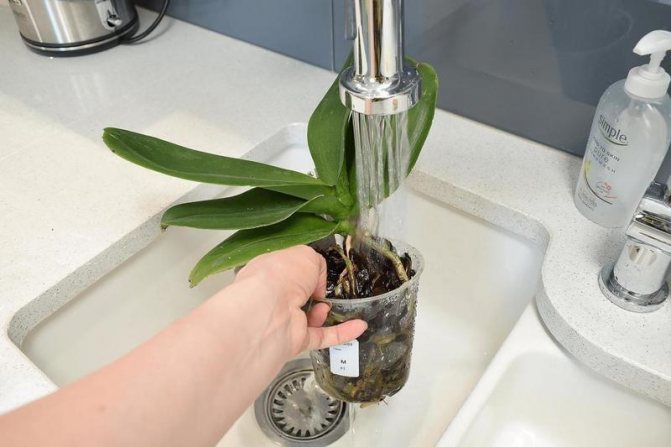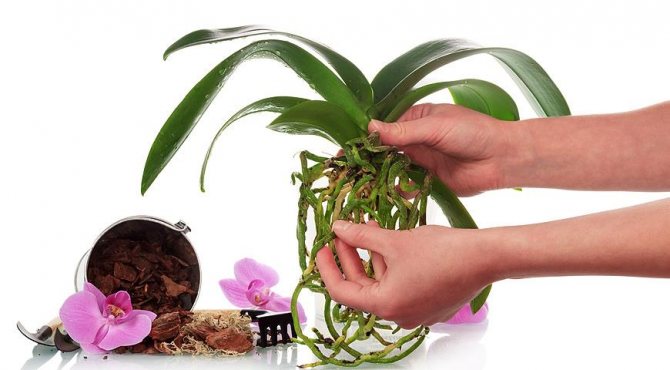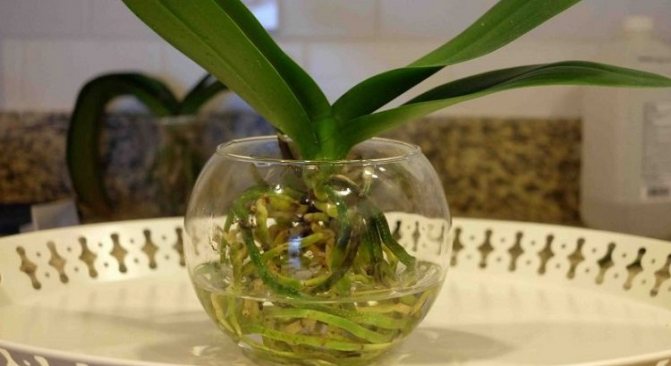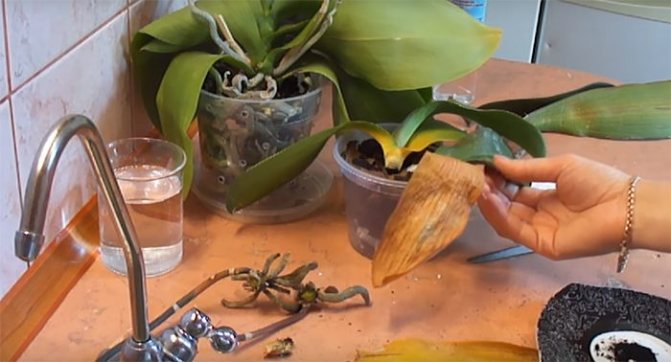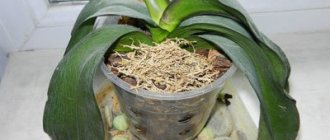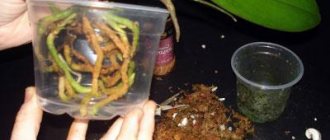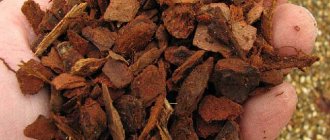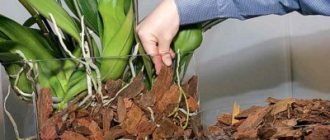Taking good care of your indoor plants can help you avoid a lot of hassle. But if mistakes were made in the courtship process, succinic acid can help quickly revive any plant. It is especially often used in the care of orchids.
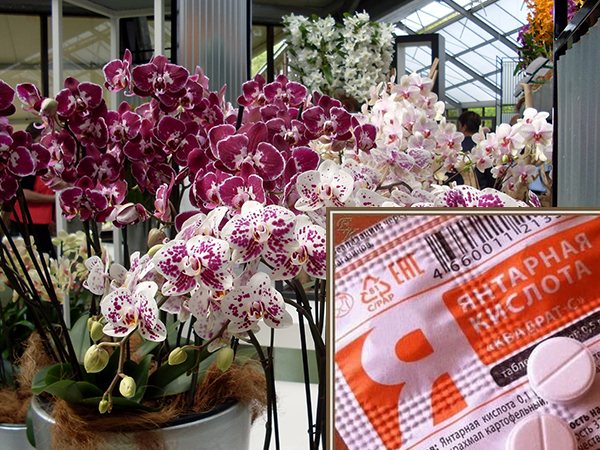
Orchids are beautiful flowers, but quite whimsical to grow and care for. With proper planting and watering, they can bloom for 10-12 months.
But often create comfortable conditions for flower growth can be quite difficult, and many admire only the foliage of the plant. However, today there are many drugs to stimulate and strengthen the growth of any plant. One of them is succinic acid.
Succinic acid for phalaenopsis orchids: rules of use
IN growing flowers a lot of tricks. Succinic acid can serve as a living elixir. Without knowing the simplest rules for its application, you can harm the plantwithout achieving the desired effect.
The drug is sold in the form of tablets or powder. His diluted in hot water, stirring occasionally.
For the required volume of solution, add room temperature water... With this composition, the root system is shed.
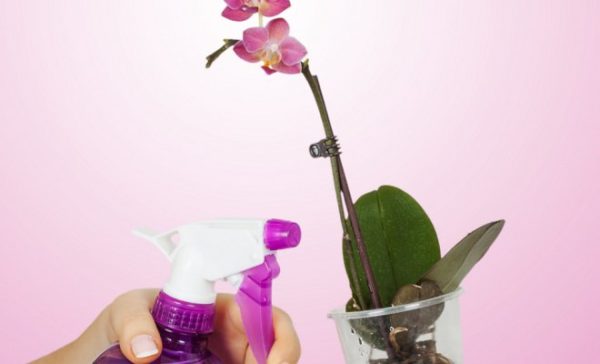

Foliar feeding for Phalaenopsis orchids is an integral part of the care.
Foliar dressing on the leaves are essential, useful. With this use, the orchid gets nourishment faster.
Forms of release and preparation of solution
You can buy the drug in the pharmacy in the form of pills either in a flower shop in the form of a powder of colorless crystals. In any form, it dissolves well in water, better in hot.
Recommended dosage: 1 gram of substance per 1 liter of water. Dissolve is better in a small amount, then add the rest of the water to the container. Working solution stored for 2-3 days.


Top dressing or stimulant
Consider feeding and stimulation for:
- Increased flowering period. The method of spraying the leaves in the dark causes stimulation and growth of peduncles. Additional temperature reduction with re-feeding can also have a good effect;
- Root growth. In phalaenopsis, fed with this solution, the growth of the root system is stimulated. The time of feeding by the soaking method is individual for each plant separately. Keep the roots in the solution for 2 hours, followed by drying. Spraying young roots will be a great addition;
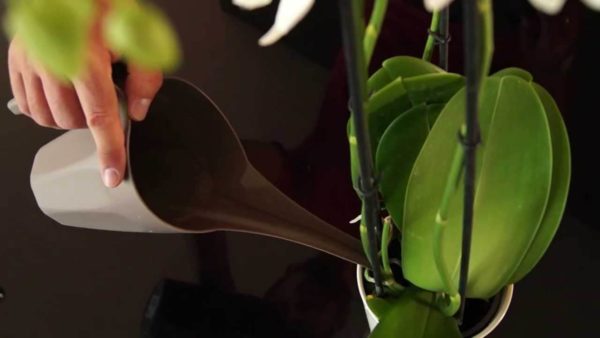

- Acceleration of regeneration of roots and leaves. Succinic acid is used not only as stimulants and top dressing. It helps to regenerate the roots and leaves of the orchid. This method is often used by immersing the plant in a solution for a short time - no more than one hour. This method is good for young open-root orchids;
- Increasing resistance to adverse factors. Seeing burns, noticing waterlogging of the soil or lack of watering, apply stimulating spraying to help the plant;
- Resuscitation after stress. Treatment with succinic acid is used after transportation or transplantation. With the help of such spraying, phalaenopsis gets used to the new conditions of detention better; when transplanting, there is a chance not to lose flowering buds;
- Improving the quality of the soil. Succinic acid improves the quality of the soil, microflora, promotes the destruction of toxic elements in the soil, stimulates the processing and assimilation of other nutrients.
Beneficial features
- Increases stress resistance of plants to external environmental factors.
- It is a biostimulant that accelerates the growth of the plant and its parts.
- Prevents excessive accumulation of nitrogen and toxic substances.
- Normalizes soil microflora.
- Reanimates sick and damaged plants.
- Helps to better absorb nutrients and fertilizers.
Important! Succinic acid is not capable of replacing the applied top dressing, it promotes their assimilation by plants and prevents excessive accumulation of nitrogenous substances.
You can find out how to feed a flower, as well as see an overview of the best means for fertilizing an orchid, here, and in this article we talked about which ready-made dressings are better, how to make them yourself.
We offer you to watch a video about the benefits of succinic acid for orchids:
Amber fertilizer and its application
To stimulate root growth and for resuscitation
Succinic acid is used to fertilize orchids. With her help, plants increase their own immunity. Its use in combination with basic fertilizers gives:
- Possibility of rapid growth;
- Healthy appearance;
- Prevents most diseases.
The peculiarity of this sharing is enhanced action of the drug and improved absorption of nutrients from the soil in the proportions necessary for the orchid.
During the growing season, you may be faced with the fact that the orchid loses most of its roots as a result of inappropriate maintenance and care.
Root restoration is going rather slowly.
Practically impossible to force an orchid fast develop and grow new roots... But succinic acid with its stimulating, biologically active properties can help the plant.


For the successful growth of an orchid, it is necessary to create a favorable environment.
In situations where most of the leaves and roots have rotted completely, a complex procedure is needed to resuscitate the roots and leaves in greenhouse conditions.
Scheme:
- Remaining roots and leaves should be sprayed with a light solution of succinic acid to start and grow in a ratio of 1 tablet to 2 liters of water and leave to dry for up to four hours;
- Following prepare a transparent container, filled to a quarter with coarse fractions of the substrate, and place it about 2-3 centimeters above the surface of the soil;
- The orchid should not come into contact with the ground, the best option is to hang in the air. Use large pots;
- Remove the construct away from direct sunlight;
- Moisten the substrate as it dries and watch how the phalaenopsis reacts to new housing. Try to create conditions close to their natural habitat.
In three, four weeks you will be able to admire the first roots.
To restore the turgor of the leaves
Seeing the loss of turgor, make a solution of succinic acid and wipe the orchid leaves with a cotton pad.
You can put the plant in a plastic bag with a castle containing wet sphagnum moss.
Once every 2 weeks, spray the moss with a weak solution of succinic acid (1 tablet per 2 liters of water).
To increase the flowering period
Succinic acid stimulates flowering, increasing the number of emerging flowering shoots.
Process the plant, intended for flowering, with succinic acid. The plant should be healthy with 3-5 leaves.
Send the plant to its place, at the same time, reduce the amount of watering in half and the results will not be long in coming.
When a flower arrow appears up to 10 centimeters repeat spraying.
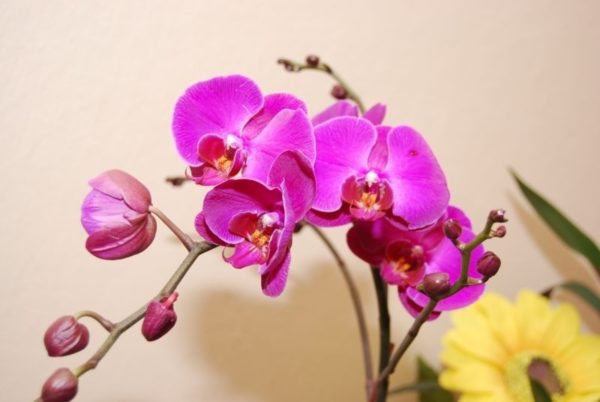

Succinic acid stimulates flowering.
In between the bookmark of the peduncle do not fertilize the orchid, don't shower her.
Subsequent fertilization in reduced dosage can be applied after the opening of the first flower... It will prolong flowering and enlarge buds and flowers.
To stimulate the growth of the kidney
Orchids are considered capricious plants. If you find an approach to this beauty, then over time it will be possible to reproduce.
Consider one of the options - grafting using a greenhouse.
Faded arrow cut off near the roots and cut into cuttings with two buds, remove the scales on one of the buds and place them in a transparent bowl with wet sphagnum moss at the bottom of the container.
We spray the cuttings inside the greenhouse with a solution of succinic acid and close the lid.
Place the container in a warm place. with a temperature of 30 degrees and expect.
Humidity and warmth will give results, and we may see orchid babies.
Processing methods and applications
Recommendations will help you organize the proper cultivation and care of the plant. The use of amber should not be thoughtless, otherwise the orchid will die. Observe the frequency of feeding, follow the working concentration of the solution.
Application methods:
- Rooting keikis. Prepare a 0.2% solution. Soak the shoot in a container, submerging it to a depth of 2 cm. Repot after 24 hours. If it has developed roots, spill or spray for better survival in a new pot.
- Stimulation of the root system of an adult orchid. Use a 0.1% solution for watering. Frequency - 2 times weekly for 2 weeks.
- Stimulation of growth, flowering. Spray 0.1% solution. To provoke an orchid bloom, do 2-3 sprays twice a day. Processing once every 2-3 weeks will enhance growth and vegetation.
- Antistress. Spray leaves, spill roots with 0.05% solution. Frequency - once every 2-3 weeks.
- Fungicide. Prepare a concentrated 0.1% solution, bathe the plant for 10 minutes, or spray the leaves.
For feeding the roots
Treat before planting in a new location. The root system is treated with a 0.1% solution from a spray bottle. If the orchid dies:
- remove damaged, rotten roots;
- immerse the flower in the solution for 3 hours, periodically removing it for 5-7 minutes;
- after processing, dry the roots in air for 2 hours;
- transplant into a new pot with fresh substrate.
How to water an indoor orchid?
The type of watering is based on the planting method. The orchid grows in a pot with drainage holes:
- pour the solution into a watering can;
- pour the roots in a thin stream around the perimeter of the pot;
- work until moisture flows out of the holes, drain the rest from the pallet.
It is permissible to use submersible irrigation. Pour the solution into a container, lower the pot for 15-20 minutes. Take out, let the liquid drain.
If the orchid grows in a flask without drainage:
- slowly, gently pour the amber with a watering can;
- drain the excess after 20 minutes;
- when draining, hold the root collar with your palm, gently tilting the pot.
How to wipe the leaves?
Processing is carried out in two ways: wiping and spraying. Take settled or filtered water. What to do:
- Moisten a soft cloth or cotton pad liberally. Don't squeeze. Treat the leaves on both sides. Blot the sockets of the plates, otherwise you will provoke rotting of the growth point.
- Pour the solution into a spray bottle. Spray until both sides are wet. Remove excess moisture.
- When working with dying plants, use a concentrated solution of 0.2%.
- In both cases, use additives. They will improve the penetration of the active ingredient (polysorbate).
What is succinic acid
Succinic acid is a simple and affordable agent that is widely used to stimulate the growth of many crops (especially indoor plants). This substance has a chemical name - dicarboxylic acid. It takes the form of translucent crystals that are soluble in water, ether or alcohol.
This substance is produced from amber and is used both in horticulture and medicine. It tastes vaguely like citric acid.


In what forms is it sold
It is believed that the use of pure (crystalline) succinic acid is the most beneficial option for orchids.
In its pure form, you can find it in flower and garden stores.
But the simplest and most convenient forms are tablets or sachets containing ready-made powder, sold in pharmacies (without a prescription).


When purchasing a substance from a pharmacy, it is important to know that this form is made for people, therefore has a number of impurities, such as ascorbic acid, sugar, glucose, potato starch, talc and many others. Of course, these impurities can harm the plant, but not in such scanty amounts.
Note! One tablet weighing 0.5 grams of active ingredient (succinic acid) contains only 0.1 grams.


Note! However, there is an alternative opinion about the use of YaK in tablets for orchids, expressed in the following videos. In short, these are pills for the human body. You need to fertilize plants with special fertilizers. If succinic acid is used, then only in its pure form - crystalline, and not in tablets!
Video: succinic acid tablets - is it worth using it for resuscitation of orchids
Overdose - How Often Can Acid Be Used
Orchids are able to easily assimilate succinic acid. There is practically no chance of an overdose. An excess of a substance is not used by the plant as a food product. However, adherence to certain norms helps to achieve the maximum positive effect.
A solution based on succinic acid can be used in various ways. However, the regularity of use is general. The orchid should be processed once every 20-30 days. It is often impractical to use acid. Flowers simply cannot absorb large amounts of this substance.
The main advantage of acid is that, even in small amounts, it is of great benefit to orchids. It should also be used because the solution is useful:
- increases the content of vitamins;
- prevents the accumulation of nitrogenous substances in the soil;
- increases plant chlorophyll.
Succinic acid is an excellent remedy for quick resuscitation of a large orchid. Remember that to obtain a positive effect, it is enough to use a solution of low concentration.
What are the benefits of using succinic acid for orchids
These beautiful flowers from the orchid family (orchids) are ancient plants that have come down to us from the Late Cretaceous era. They have delicate bright bizarre inflorescences.
Orchids need a moist environment. In order to pick up moisture from the air, they release aerial roots. It is worth recognizing that this type of indoor plants is quite whimsical, but with certain knowledge and skills of a florist, it can bloom magnificently and please the eye.
However, if you notice that something is wrong with your orchids, or you want them to withstand the transplant better, then the use of succinic acid will make it much easier for them to cope with stress, adapt and grow.
Benefits and Potential Harm
The benefits of succinic acid for orchids are enormous. The main advantages of this tool are its natural origin (environmental friendliness) and availability (cheapness).
By the way! Succinic acid is a very good helper for all indoor plants (not just orchids).
Succinic acid has the following positive effects on plants (including orchids):
- stimulation of growth and formation of new roots;
- improves the formation of ovaries - increases the number of flowers and the duration of flowering (in other words, stimulates flowering);
- helps the plant to better absorb nutrients from the soil and prevents the concentration of harmful components in the soil;
- has a beneficial effect on plant cuttings, i.e. increases the likelihood of their rooting and subsequent development of a young plant (similar to the use of heteroauxin or root);
- restores the immunity of the transplanted plant (used as an anti-stress agent);
- allows you to reanimate a dying plant or restore it after an illness (stress);
- helps to cope with adverse environmental conditions and improper care (heat, frost, excessive humidity and drought);
- often used to improve the germination of plant seeds (for pre-sowing treatment);
- stimulates the formation of children in succulents.
Any, even the best, means fraught with potential harm to both plants and humans. However, succinic acid is an environmentally friendly and by no means a potent agent, but biostimulant. Therefore, it actually cannot harm the plant, moreover, the solution does not accumulate in the plant itself and in the soil, because decomposes quickly enough in air and light.
Accordingly, no special precautions are required in the preparation and use of the solution. However
- despite the fact that the substance is harmless, it is still an acid, therefore, it should not be allowed to get into the eyes and mucous membranes;
- when working with acid, it is recommended to wear rubber (latex) gloves and glasses on your hands;
- it is necessary to protect children and pets from it, the drug should be stored in places inaccessible to them.
However, as you understood, succinic acid also has its drawbacks (common to all biological products):
- You should not expect a very quick and downright miraculous result from using the solution. The remedy is enough weak but effective.
- Frequent use of succinic acid solution acidifies the soil.
Video: how to revive orchids and other indoor plants with succinic acid
Can succinic acid replace other feeding and grooming procedures?
This compound is only an additional component of the dressing. She is unable to replace the plant with a nutritious diet in the same waylike lemon water replace a piece of bread for a man. You can use it in combination with other drugs - then all substances will complement each other and the effect will be maximum.
Watch the video for tips on using succinic acid:
And this video shows the wiping of plant leaves with this preparation:
And here is shown the use of garlic with succinic acid for watering:
Treatment of orchids with succinic acid
Succinic acid works no worse than living water for indoor flowers. Since orchids have vulnerable roots, which are involved both in photosynthesis and in feeding the trunk and flowers, succinic acid is used for their active growth.
Note! It should be remembered that succinic acid - it is a biostimulant (dietary supplement), not a top dressingtherefore, you should not get carried away with it without strong need.
Recall that the use of succinic acid has the following beneficial effects on orchids:
- acceleration of growth processes (especially the root system);
- transfer of fertilizers into the form necessary for assimilation by the plant (normalization of the natural microflora of the soil);
- stimulating the release of flower arrows and increasing the splendor of flowering;
- general improvement of the plant.
Succinic acid is most commonly used as an anti-stress agent when boarding and transferring, as well as for resuscitation of the dying (wasting away from improper care) plants.
The use of succinic acid for orchids is versatile: you can wipe the flower leaves, spray or water (directly on the roots or by immersion).
Video: how and why to use succinic acid for orchids
When can I apply
Note! It is recommended to use succinic acid to stimulate growth and flowering only during the growing season (spring, summer). You should not use YAK unnecessarily during plant dormancy (after flowering, i.e. in autumn, winter), since it is impossible to stimulate and cause the growth of orchids artificially. Otherwise, in the future, this may adversely affect their development.
Preparation of the solution
How to dilute succinic acid for orchids?
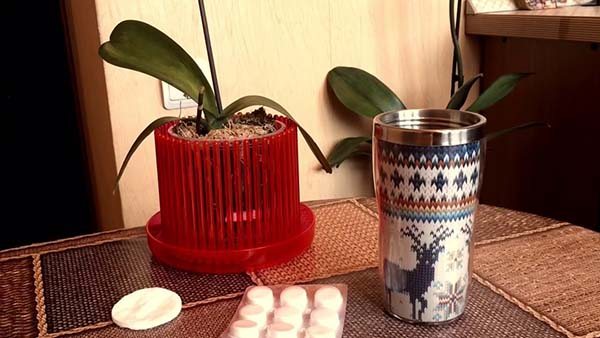

Important! The use of a solution of succinic acid at different times of the year differs in concentration.
To prepare a standard working solution, you must Dissolve 1 tablet (0.1 gram of the active ingredient, the tablet itself can be 0.25 grams and 0.5 grams) in 1 liter of warm water.
Interesting! You can often find a recommendation that it is still better to make a more concentrated solution (Dissolve 0.1 grams of active ingredient in 0.5 liters of water). Since there can be no overdose, in principle, you can use this concentration.
Since the acid dissolves poorly (slowly), initially it is better to crush the tablet and dissolve the resulting powder in a small amount of water (200-300 ml). Then add water to the required volume.
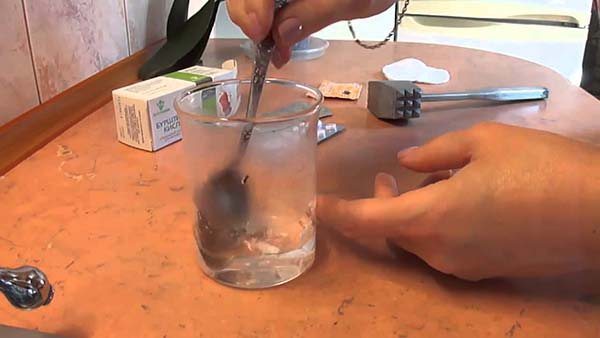

Note! Despite the fact that during the rest period (winter) the use of succinic acid is not recommended, it is still allowed in emergency cases, and the concentration of the solution should be reduced, i.e. 1 tablet will dissolve in 2-3 liters of water. In this case, the treatment itself is best done by spraying from a fine spray (no more than 1-2 times a month).
It must be remembered that a solution of succinic acid for orchids should cook just before use, since the active substance decomposes rather quickly in air and loses its effect. And here you can store the solution in a hermetically sealed glass container for up to 3 days, always in a dark and cool place.
Important! When preparing any solutions, the correct proportions must be observed, but it is believed that an overdose of succinic acid is impossible, since the plant simply will not assimilate the excess concentration!
How to process orchids
So how is succinic acid to be used for orchids? There are different processing methods:
Prepared by: Yuri Zelikovich, Lecturer at the Department of Geoecology and Nature Management
<при использовании="" материалов="" сайта="" (цитат,="" таблиц,="" изображений)="" указание="" источника="">
The plant biostimulator Yantarin is produced in the Russian Federation by CJSC Firma August. The drug contains 0.5% (5 g / l) succinic acid. This substance was first isolated from amber, but got into it from plants - amber, as you know, is the petrified resin of conifers. In addition to plants, succinic acid is vital for all living organisms (see below) and is part of them.
The effectiveness of the drug. Overdose risks
Some people claim that succinic acid stimulates the plant's production of chlorophyll, and as a result, the growth of new cells. But, as is known to science, succinic acid does not participate in the synthesis of chlorophyll.
Whatever it was, all plant organs can be treated with this preparation. The substance is well absorbed by the plant, and although there is little benefit from it, it certainly does not bring harm.
Advice! Though the probability of an overdose is negligible still observe the measure, do not be greedy.
What can you expect?
Succinic acid is not a miracle panacea like a "pill for everything" from anecdotes. But, using Yantarin for processing plants, it is quite possible to obtain a significant positive effect (see also fig.):
- Biosynthesis in plants is activated.
- Consequence 1: accelerates growth and development, increases flowering, accelerates the ripening of the crop.
- Consequence 2: the resistance of plants to stress increases.
- Secondary consequence 2: the resistance of plants to diseases increases, because their occurrence is most often triggered by stressful conditions.
- Corollary 3: Nitrate accumulation and pesticide treatment are less inhibitory to plants.
- Consequence 4: excess nutrients and foreign substances are absorbed faster or neutralized by plants or removed from them.
- Secondary consequence 4: the quality and nutritional value of the crop is increased.
- Sick plants are easier to heal and recover faster from illness.
- The use of Amber by irrigation under the root activates the microflora of the soil, because succinic acid is also needed for her, see below.
- An additional consequence: the accumulation of foreign substances in the soil is reduced, and their residues are quickly neutralized.
- Secondary additional consequence: succinic acid contributes to the preservation of soil fertility and the effectiveness of measures for its reclamation.
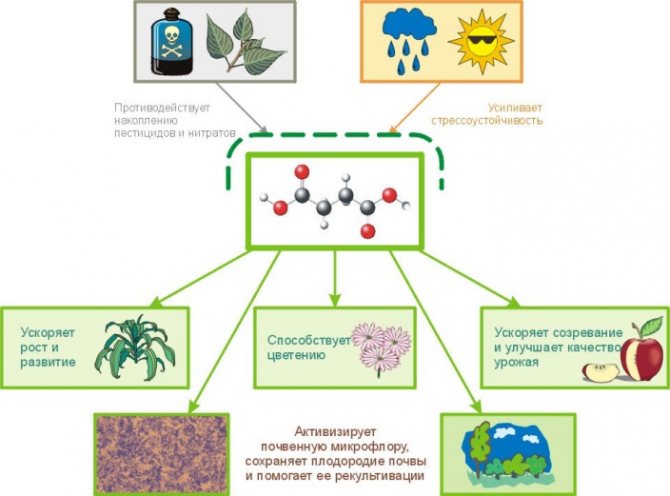

Florist reviews
Anna
The orchid growing on the windowsill did not bloom for more than a year, but it was actively growing foliage. In the spring I decided to treat the flower with succinic acid. Dissolve the white matter tablet in 1 liter of water. I sprayed the orchid with the resulting solution every morning. Less than a month later, the orchid threw out the long-awaited arrow. There were many large buds on it. It turned out that the drug not only stimulates flowering, but also increases its duration.
Olga
Succinic acid helped me save an orchid that has lost its roots due to rot. I cut off all the affected areas and sprinkled them with powder obtained from the tablets. Then she planted the flower in a new pot. I watered it with a solution as the substrate dries. Periodically sprayed the orchid with the same composition. After 3 months, young roots were already visible through the transparent walls. The plant began to grow and soon threw out a peduncle.
Succinic acid is not a panacea, but just an additional agent for orchid care. No need to ignore feeding and other procedures necessary for the normal development of an epiphytic plant. However, the correct use of the drug helps to keep the orchid in a healthy and blooming state for many years.
Solution or tablets?
Succinic acid is produced industrially from malathionic anhydride, which, in turn, is a by-product of brown coal processing. Amber for plants is a pure monopreparation of succinic acid. Tablet medical succinic acid can be bought at a pharmacy, but one tablet will contain 0.1 g of DV, and the rest is a filler (talc, chalk) and, possibly, additional substances that are useless for plants. For spraying and introduction into drip irrigation systems, the solution of "tablet" succinic acid is not very suitable, because contains micro-suspension that clogs nozzles, nozzles and capillaries of dispensers. For the same reason, orchid leaves after a certain time after treatment with medical succinic acid (see below) must be washed with water, which once again disturbs oppressed plants.
Recalculation and recalculation
It is easy to dilute Yantarin instead of pharmaceutical succinic acid: only an elementary recalculation of the amount of the drug is required: 1 tablet per 0.1 g DV = 50 ml of Amber VRK. Or 100 ml VRK = 2 tablets. The recalculation of the costs of the drug also shows its benefits, since Amber VRK is available in packaging from 100 ml; medical succinic acid - plates of 10 tablets. Here it is also necessary to take into account that a liquid preparative form in a container unit vial makes it possible to select portions of the drug throughout the shelf life, which in general is not possible for succinic acid powder in bags.
How to process?
Use all methods: soaking, spraying, watering. Table - preparation and purpose of the working solution.
| Concentration | Amount of water | The amount of amber | Appointment |
| 0.2 % | 1 L | 2 g (2 tablets, 1 sachet) | Growth stimulation, |
rooting of sprouts
When should you use the product?
To stimulate growth, flowering, feed during the growing season. Treat the plant in spring and summer. When the flower is at rest (autumn-winter season), use is undesirable. Take these measures if the plant organism has suffered stress. You can revive a dying orchid at any time.
How to dilute crystals?
The crystal structure is dense. The substance is poorly soluble in cold water. Pre-stir the powder in a glass of warm water. Proportion: 1 g per 250 ml. Pour into a container with liquid at room temperature (750 ml). Get a 0.1% solution at the exit.
How to dilute powder sachets?
Proportions: 1 g (half a sachet) per 1 liter of water. You can take the powder with the tip of a knife. Dissolve in a glass of warm water. Bring to full volume. If the orchid is unhealthy, reduce the amount of water to 0.5 L. This will increase the concentration of nutrients.
How to dilute a solution of tablets?
The pharmaceutical preparation contains 0.1 g, 0.05 g of succinic acid. What to do:
- grind into powder (with a rolling pin, in a mortar);
- place in a linen bag - the material will filter out additional substances;
- place in 1 liter of warm water - a solution is formed at a concentration of 0.1%;
- if tablets are in a dosage of 0.05 g, use 2 pieces per 1 liter of water;
- if the plant dies after stress, increase the concentration by reducing the volume of liquid to 0.5 l.
Act
Chemical formula of succinic acid
In respectable trade avenues, Yantarin is positioned as a plant stimulant; sometimes as a growth promoter, which is also true to some extent. But succinic acid (the formula in the figure on the right) is not an auxin-like compound and not a phytohormone at all. Its stimulating effect is of a different nature.
The vital activity of all living organisms is provided by special substances, the so-called. macroergic (energy-intensive) - energy storage and transporters. Macroergic compounds of living beings are known approx. 40. Of these, the most important is adenosine triphosphoric acid (ATP); the role of guanosine triphosphate (GTP) is also essential.
Macroergic substances are formed in organisms in three jointly acting ways:
- In the respiratory chains;
- Oxidative phosphorylation;
- On the so-called. general pathway of catabolism.
The general pathway of catabolism provides, in addition to directly energy carriers, substrate substances for mitochondrial respiration. In plants as producer organisms, the role of the general pathway of catabolism is especially important. The central phase of this biochemical process is the so-called. the tricarboxylic acid cycle, or the Krebs cycle (by the name of one of the discoverers), or, not quite correctly, the citric acid cycle.
Note: Hans Krebs and Fritz-Albert Lipmann were awarded the 1953 Nobel Prize in Chemistry for their research on the general pathway of catabolism.
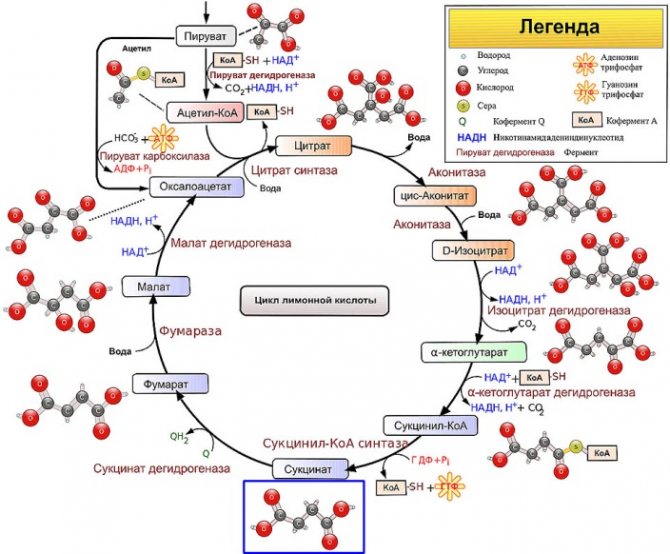

Scheme of the tricarboxylic acid cycle on the general pathway of catabolism
Succinic acid is one of the links in the tricarboxylic acid cycle (shown in the blue box in the figure on the right), but the link is critical. Due to its relatively low molecular weight and simple chemical structure, the hydroxyl groups of succinic acid are chemically very active. But for the same reasons, succinic acid easily decomposes in light and air, or is lost by plants by simple diffusion. The plant organism has to spend a good share of the energy it receives from light and nutrients to replenish its "unplanned" loss.
Feeding plants with succinic acid releases this energy to activate life processes. Let's imagine, figuratively speaking, a goner smoked to the ends of his hair. And so, a certain pill appeared in pharmacies, the reception of which clears his lungs to rosy ones, like a sturdy baby. The effect of succinic acid on plants is somewhat similar to the effect of such a hypothetical drug.
And the mushrooms?
In some manuals and product descriptions, succinic acid is attributed to the properties of a fungicide or, in general, a universal pesticide. This is not true.Plant cells on top of the cell membrane are covered with an outer cellulose membrane - succinic acid diffuses through it. Animal cells are deprived of a special protective shell - they are protected by the outer covers of the body, which provides animals with mobility. But the cells of the fungi are covered over the membranes with a continuous layer of chitin. For succinic acid, the thinnest chitinous layer is impermeable, therefore, it does not act on fungi by contact and is not absorbed by hyphae. The correlation between the use of succinic acid in plants and the degree of their susceptibility to phytopathogens and pests is false, because the increased resistance of plants in this case is simply due to the stimulation of their vital activity by the preparation.
Purpose of application
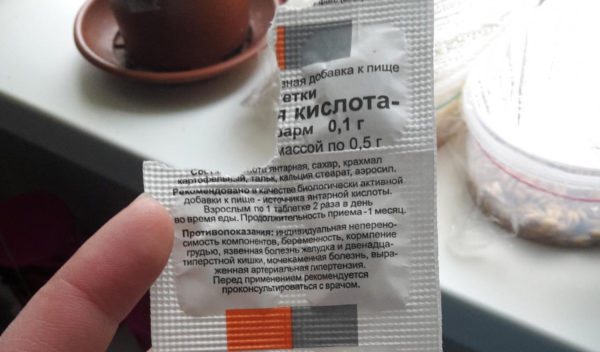

Succinic acid is a kind of colorless crystals. It is also present in all living things that breathe oxygen masses. The component was isolated in the 15th century. from amber, which is why it has such a name. Today, succinic acid (YA) is also obtained through photosynthesis.
Note. The substance obtained by processing amber is expensive, but its composition does not differ from that isolated industrially. The drugs are produced in tablet and bulk form.
Orchids began to be enriched with succinic acid many years ago. Today they are used for the following purposes:
- Reanimation of exotic after a stressful situation for him, for example, after transportation or transplantation.
- Increased regeneration of the stem and foliage, which are injured as a result of increased temperature or frost.
- Reducing the recovery time and eliminating the provocateurs of the death of the flower.
- An increase in the general resistance of phalaenopsis to negative factors - UV burns, moisture deficiency, low temperatures, waterlogging.
- Improving photosynthesis of orchid leaves.
- Enrichment of foliage with chlorophyll, which triggers the intensity of growth and improves the aesthetics of the flower.
- Stimulates root formation, especially in young orchids that have not formed roots and only increase their mass.
- Improvement of the soil, normalization of the balance.
- Faster conversion of fertilizers into bio-form.
- Starting rooting during cuttings - the use of succinic acid for orchids significantly increases the survival rate.
- Increased flowering time due to the most complete metabolism.
After stress, Phalaenopsis quickly recover, form arrows and will bloom for a long time. It is not difficult to use succinic acid, especially since there are instructions for use. If you make the feeding composition according to the rules, there will be no negative effects on the flowers.
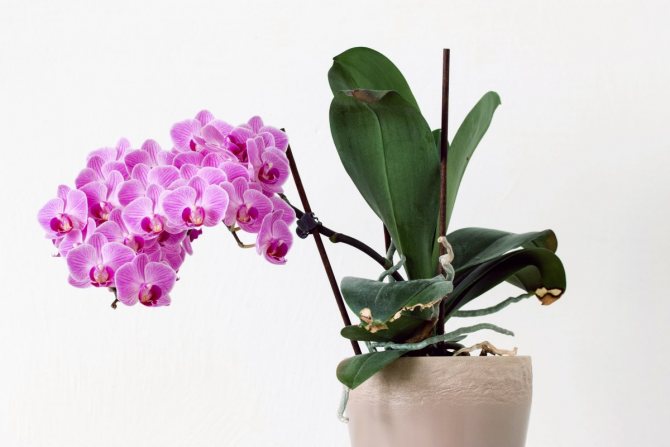

You may be interested in:
How to properly prune an orchid after flowering: basic pruning rules Orchids such as Phalaenopsis bloom twice a year. The period lasts about two weeks, and its other kind ... Read more ...
The degree of danger
Yantarin is classified according to hazard class 3 for humans and hazard class 3B for bees. However, this is what shows (on the contrary) how conventional the hazard classifiers are and how important it is when working with a drug to pay attention to the specific properties of its active ingredients (AD).
In the 3rd grade for humans, Yantarin ended up, in essence, because the deliberate misuse of the drug or extremely careless handling of it can cause severe poisoning. Which is not excluded, tk. Amber is intended for use by unskilled users in private household plots. However, the toxicological indicators of succinic acid are comparable to those of ... common table salt: LD50 for rats orally 2.26 g / kg (!); for mice intravenously 1.4 g / kg. In human terms, this means that for severe poisoning with succinic acid, it must be eaten with spoons, but in reality this substance is not much more dangerous than food citric acid.
Amber and bees
Nevertheless, before spraying open ground plants with Yantarin, you need to warn about the upcoming processing of the surrounding beekeepers 3-5 days in advance (whose apiaries are in the protected zone, see below). The fact is that the height of flowering of fruits in beekeeping is the time when the day feeds the year. The limitation of the summer of bees for Yantarin is short-lived (also see below), but during the rush of honey collection it may turn out to be critical for the profitability of the apiary. It is necessary to respect beekeepers if only because there will be no good harvest without pollination by domestic bees - the total activity of wild pollinators is not higher than 15-20% of that of a honey bee. That is why it is necessary to warn that the beekeeper (s) decide whether to lock up the bees or it is better to move the whole apiary to a new place. It takes several days to find and move there.
How to apply?
In watering
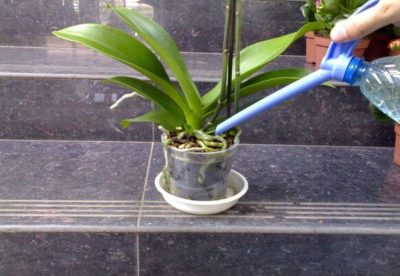

A solution is used prepared according to a standard formulation from powder or tablets.- Watering is carried out using a small watering can.
- The solution should be applied to the soil slowly and over the entire surface of the substrate.
- The signal to stop watering is the liquid flowing out of the drainage holes, you need to wait until the excess is completely drained into the pan.
- This method of watering will nourish the roots well.
How to fertilize a flower growing in a flask? If the orchid grows in a container without drainage holes, for example in a glass flask, watering has its own characteristics. The watering can is the same, but after watering, after about twenty minutes, the excess solution must be drained by tilting the planter and holding the root system and drainage with your palm. It is important to wait until the liquid has completely drained out.
Important! If the orchid is protected from drafts and temperature extremes, watering can be done at any time of the day. If not, then the procedure is best done in the morning.
In leaf processing
- A napkin or cotton pad is moistened in the prepared solution.
- Wipe the sheet plate.
- It is important to keep acid away from the base of the leaves.
- Two days after applying the drug, the leaves are wiped with a clean cloth dipped in warm water.
Precautions
Based on the foregoing, the following protection zones for spraying with succinic acid of open ground crops are established:
- Apiary - 2.5 km (limitation of summer bees 24 hours).
- Children's, medical and special recreational institutions - 150 m.
- Water bodies, water supply sources - according to their water protection zone (MAC of succinic acid in water bodies of 0.01 mg / cubic dm).
- Other buildings and other habitable objects - 5 m.
A protective zone for adjacent plantings is not established - the excess of the drug carried there will not harm the plants. Also, no protection zones are established for root irrigation and manual processing of plants without spraying the drug; the latter can be carried out at home in a domestic environment.
PPE for working with Amber needs basic ones: work clothes, shoes, gloves, goggles; it is advisable to protect the mouth and nose with a gauze bandage. In case of contact with the skin, wash off with water. In case of contact with eyes, rinse them open under running water. In case of contact with mucous membranes, rinse the affected cavity with water. If swallowed, take 2-3 tablets or activated carbon powder. It is not necessary to put two fingers in your mouth - the sorbent with the remnants of the substance will come out naturally.
It is permissible to store Yantarin at home, but, of course, in a tightly closed original container, under constipation from children and animals. Neutralization of spills - wipe with a rag, rinse thoroughly and wipe the drenched area with it again. Neutralization of the preparation spilled to us is not required.
When to use?
- If the plant is damaged after a disease or as a result of improper care, waterlogged or overdried, this is a reason to apply succinic acid.
- If the stems and leaves are drooping and lethargic, and flowering is delayed, then the use of "amber" is simply necessary.
- Also, the drug can be applied to the soil to help microorganisms concentrated in the ground, quickly destroy toxic organic substances.
- If the plant is healthy, additional treatment with succinic acid will increase the flower's resistance to negative environmental influences, accelerate growth, strengthen the roots and aerial parts.
Application procedure
Yantarin for plants is used by spraying assimilating surfaces (green foliage and stems), watering under the root and manual processing without spraying (for indoor): wiping with a swab moistened with working solution, bathing the roots, etc. Spraying is carried out according to the usual rules, but it is better to time it for the evening time: there will be less losses of the drug from irradiation by sunlight, and by the morning, when bees and wild pollinators fly, its residues on flowers will not bring significant harm to them.
Instructions developed by the manufacturer for the use of Yantarin in private household plots for open field crops are given in the table, with the addition of dosages in%.


Amateur growers, in addition, successfully use succinic acid for irrigation under the root of seedlings, see video:
Video: the use of succinic acid for seedlings
Species of fruit and vegetable plants, which are perennials in the wild, but cultivated as annuals, for example, respond to this stimulant especially readily. tomatoes:
Video: the effect of succinic acid on tomatoes
In either case, instead of medical succinic acid in tablets or agrotechnical in powder, liquid Yantarin VRK is quite applicable. How the dosage tableted in the VRK is recalculated is indicated above. To calculate the dose of powder, you first need to determine the weight dose of 100% powder from the tabular concentration:
- 0.0025% - 0.25 g / 10 l;
- 0.0125% - 1.25 g / 10 l;
- 0.013% - 1.3 g / 10 l;
- 0.0015% - 0.15 g / 10 l;
- 0.00075% - 0.075 g / 10 l.
Next, the resulting "pure" value is divided by the weight content of the DV in the powder preparation or multiplied by its inverse:
- 90% - divide by 0.9 or multiply by 1.11;
- 80% - divide by 0.8 or multiply by 1.25;
- 75% - divide by 0.75 or multiply by 1.33;
- 60% - divide by 0.6 or multiply by 1.67, etc.
Orchid savior
Of the tens of thousands of orchid species, only a few take root in ordinary living rooms, and even then they often get sick, and achieving their year-round flowering is a triumph of a florist. The reason is the growing conditions of wild ancestors. Highly decorative orchids come from the "lungs of the planet" - tropical rain forests. Much less decorative orchids of temperate latitudes grow, as a rule, in the depths of forest thickets, where there is more oxygen in the air and much less pollution than on the edge of the forest, and even more so in the city. If the temperature and humidity regime for orchids in the living room can still be adjusted, then there is simply nowhere to take "Caribbean air" there. In this case, the use of succinic acid will help tropical beauties to get by with what they have, and Amber will greatly facilitate and simplify the processing of plants.
The drug Yantarin VRK for orchids is applicable in several ways, according to the state and conditions of plants:
- Stimulating root watering of sluggish and / or non-flowering healthy orchids. The frequency is 3-4 weeks. It is carried out only during the active growing season of plants! Watering sleeping orchids with a stimulant will kill them! Dosage - 0.1 g of 100% succinic acid per 1 liter of water, or 20 ml of Amber. The latter is immediately, with stirring, dissolved in irrigation water. Watering is carried out in a thin stream from a watering can without a grid, gradually, in small portions, so that the next dose of the solution is completely absorbed into the substrate. The interval between topping up is 1-3 hours. Watering until the substrate is completely saturated can be extended on the second day, but already on the 3rd day the irrigation solution will become unusable.Watering is stopped when an excess of solution begins to flow out from under the substrate. If the plant is in a pot with a saucer or pots, after 1-1.5 hours. after the last topping up, the excess solution must be drained. From under a plant in a deaf container (for example, in a flask), or grown on a synthetic substrate, the excess solution must be taken through a siphon from a thin hose (simply sucked off). It is undesirable to drain the excess by tilting the dishes: the plant is alarmed, and part of the residue will go back into the substrate.
- Soaking the roots before planting or when transplanting; carried out as a rule in conjunction with wiping the leaves (see below). The solution is the same as in the previous one. case. The roots of healthy normally vegetating plants are soaked in it for half an hour; if the transplant is made because the orchid is withering away - 2-2.5 hours.
- Wipe the leaves - a cotton swab is moistened in the same solution and squeezed slightly. With one hand, the sheet is held at the base through cotton wool, because getting the solution into the axils of the leaves is unacceptable! With the other hand, rub the sheet with a swab with a solution on both sides from the base to the top, gradually increasing the pressure so that the last drops (if any) roll off the end of the sheet.
- Resuscitation of specimens that have lost their roots by bathing the outlet. Solution - 0.4 g / 1 L of water (80 ml of Amber per 1 L of water). Processing - immersion of the plant "upside down" in the solution so that it does not fall into the leaf axils. Processing time is half an hour. Repeat every morning (early, as soon as daylight is established), until rudimentary roots appear. The duration of the treatment cycle is up to 90-100 days. upon recovery - soaking the roots (see above), planting in a substrate and, after 2-3 weeks, stimulating watering (also see above).
- Resuscitation of plants not completely deprived of roots. Applicable for specimens that have preserved at least root tubercles. The root collar of the orchid is immersed in the same solution (80 ml of the drug per 1 liter of water) every morning for 2-2.5 hours. Make sure that the solution does not get into the axils of the leaves! The duration of the treatment cycle is the same. When the roots grow up to 4-5 cm (the length of a matchbox) - planting in a substrate that stimulates watering.
Note: Orchids reanimated with Amber or other growth stimulants should not be planted in deaf dishes or artificial substrates until constant flowering is established.
Amber and garlic
Stimulating watering, bathing and manual treatment of orchids with Amber will be more effective if the working solution contains traces of free sulfur, because it is an essential component of the tricarboxylic acid cycle, see above. The simplest way to add sulfur to the Yantarin solution at home, without overdoing it, is to cook it in a garlic infusion (water extract); in addition, garlic extract, as you know, is also a good prophylactic fungicide. For the use of succinic acid with garlic for orchids, see the video:
Video: watering orchids with garlic and amber
Note: by the same or similar methods, with the help of succinic acid, you can bring back to life other dying indoor plants, see the plot:
When should you not do top dressing?
With regard to feeding the orchid, there are no contraindications for succinic acid. The main attractive feature of the drug is its absolute safety, it is only important to observe the dosage and treatment regimen.
- Watering an orchid with succinic acid can be carried out only in spring or summer, during a period of active growth. In autumn and winter, the plant rests, all processes slow down and there is no need to stimulate them.
- During the formation of ovaries in an orchid, it is better not to process it, since at this time stimulation can harm the flower.
What are the properties of the substance?


Using this agent to treat orchids, the following effect is achieved:
- active foliage growth;
- restoration of turgor;
- the formation of new roots;
- bookmark of peduncles;
- increasing resistance to various diseases of orchids.
Succinic acid tablets are growth stimulants for orchids. In addition, they are able to neutralize toxins in the soil.
Indications for using the product
The useful composition of this product allows you to quickly and efficiently regenerate the roots and leaves of a flower, as well as normalize its nutrition. With this drug, there is a chance:
- extend the flowering period of Orchids;
- activate the process of active rooting of cut cuttings;
- stimulate root formation;
- accelerate the regeneration processes;
- increase the flower's immunity to diseases and poor living conditions;
- build up the deciduous mass of the plant.
Succinic acid for orchids is also a good antiseptic, so its effect, if used correctly, extends to the soil that contains the flower. With the help of the active substances of the drug, microorganisms harmful to the plant contained in the soil are destroyed.
Required air humidity and temperature for growing orchids
High humidity is essential for our beautiful flower. To do this, you can use household humidifiers, water containers located nearby. In the summer, you can additionally sprinkle the orchid from a spray bottle (without getting on the flowers), combining with airing. The optimum air humidity for your orchid to grow healthy is from 50 to 70%. Air humidity will increase if the window where the orchid grows is separated from the rest of the room with foil or plexiglass.
Orchids themselves are thermophilic flowers. Optimal temperatures during the day - from 18 to 27 ⁰С, at night from 13 to 24 ⁰С. You can also say if you have orchid varieties - Phalaenopsis, Dendrobium, Pafiopedilum, then orchids can tolerate heat up to 35⁰С. Also note that the difference between day and night temperatures must be at least 6 ° C. In indoor conditions, we understand that orchids are forced to put up with the temperature that is comfortable for us. In winter, if it is very cold in your place, you can remove the orchid from the windowsill and put it in the back of the room. In order to correctly determine the temperature in the room, purchase a thermometer that records the maximum and minimum air temperature in the room.
Dilution of the drug
Diluting succinic acid for orchids should be strictly proportioned. Dilute 1 tablet in 250 ml of water. The tablet is pounded in the package. The resulting powder is dissolved in 1000-1500 ml of hot water. Add warm water to the required volume.
Use a solution at room temperature or warm. It is allowed to be stored only in a dark place and using glass containers. The maximum shelf life is 3 days. The unsuitability of its use is determined by the appearance of white lumps in the liquid.
Frequency of use
The frequency of application of the amber solution directly depends on the task pursued and the time of year, provided that the plant is not depleted.
Therefore, when introducing the drug, the recommended terms and frequency are adhered to:
- spraying (before flowering) - 1-2 times;
- stimulation of root growth - for 2 weeks every 3 days;
- watering - every 3 weeks (summer / spring);
- leaf treatment for prevention - once every 2 months, to speed up recovery - 2 times a week.
In the case of a drier microclimate, to ensure complete photosynthesis, the number of activities is increased.
It is also necessary to treat with succinic acid taking into account the fact that it contributes to a fairly rapid acidification of the soil, therefore, it is necessary to take into account the initial acidity of the substrate:
- pH up to 5.5 - only spraying and wiping of leaf plates is allowed;
- pH 5.5-7 - single watering is allowed with further spraying of green mass;
- pH from 7 - watering without restrictions.
What else to feed the orchid
Growing an orchid at home in a limited amount of soil requires special care.Cymbidium should be fed from time to time to create a comfortable growth environment.
Standard houseplant nutrients are not suitable for orchids. They need soluble mineral fertilizers containing phosphorus, nitrogen and iron. They promote leaf growth and flowering and give the plant immunity against pests.
Some orchid owners also use organic additives like banana peels. However, it is difficult to calculate the required amount of such feeding. Its excess causes the process of rotting of the plant root system.
It is safer to dwell on ready-made fertilizers, among which the stick for orchids is in demand and has positive reviews. It, impregnated with mineral additives, is inserted between the soil and the wall of the pot. When watering, it gradually dissolves, nourishing the flower.
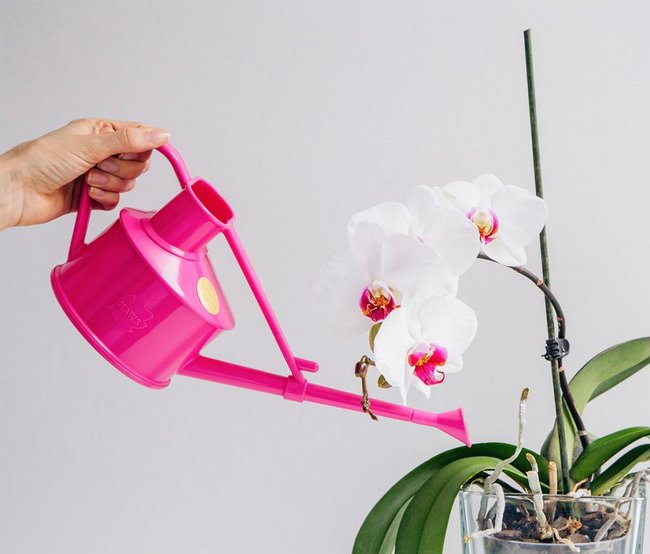

Outcome
Summing up, we can conclude that treating the orchid with succinic acid is very beneficial for the plant. This is especially true for varieties that have lower immunity at home, are more sensitive to stress and may not bloom for a long time. In addition to the anti-stress effect, UC also has an immunomodulatory effect, improves oxygen exchange in tissues and enhances the metabolic process.
It is not difficult to dilute succinic acid, depending on the indications, it is diluted in warm water and the leaves are treated with a solution by wiping or spraying. The solution can also be used for dipping, soaking and spilling irrigation.
It is not recommended to use YAK on diseased plants, flowering, and also to combine amber with phosphate, nitrogen-containing fertilizers.
How do you use succinic acid?
Where and for how much to buy?
You can buy succinic acid at any pharmacy without a prescription. The cost of the drug is 7-9 rubles.
Succinic acid is an excellent food for orchids. Its active components are quickly absorbed by the flower, leading to its active growth. With proper processing, the plant receives reliable protection from diseases and pests. it is only important to strictly observe the dosage and frequency of feeding.
To make your orchid grow well and please you, read about other fertilizers and remedies: Fitoverm, vitamins, Zircon, Epin, Fitosporin, Aktara, Bona Forte, garlic water, cytokinin paste.
Application features
Like many industrial drugs, succinic acid has a number of features:
- It is impossible to use YaK on diseased plants, since the drug significantly accelerates all metabolic processes in tissues, and this, in turn, feeds pathogenic microorganisms.
- It is not recommended to exceed the recommended dilution proportions: too concentrated solutions create overfeeding that do not want to bloom or multiply.
- You should not use amber even during flowering - this reduces the life of flowers.
- Store succinic acid away from heat sources. It is better to store the prepared solution in a cool place by pouring it into a dark bottle.
- It is best to use glass or plastic containers to prepare the solution. Try not to use aluminum objects.
- Do not prepare a lot of solution for future use. The prepared solution must be used within three days. If white flakes appear, it means that the solution has deteriorated and can no longer be used.
Drug analogues and their compatibility
Provided that succinic acid has a completely biological origin, there are no full-fledged analogues of the drug.
However, in the pharmacy, you can purchase funds with this component in the composition. Namely:
- Amber Antitox (from 850 rubles);
- Mitomin (from 1300 rubles);
- Brewer's yeast with succinic acid (from 110 rubles);
- Yantavit (from 180 rubles).
Analogues should be used when caring for phalaenopsis with caution, taking into account the auxiliary ingredients included in them, having previously estimated all possible consequences.
Additionally, you can use the product in complex solutions with vitamins, growth and root formation stimulants.
Tonic
Used for spraying and watering. Promotes root growth and stimulates growth. Upon completion of flowering, take a break in processing for a couple of months.
Prepared based on 1 liter of liquid:
- succinic acid - 2 tablets;
- nicotinic acid - 1 ampoule;
- vitamin B12 (can be replaced with aspirin) - 1 ampoule;
- vitamin C — 1 ampoule;
- vitamin B6 - 1 ampoule;
- glucose - 1 tablet.
Root resuscitation cocktail
The frequency of procedures is according to the standard scheme. Suitable for watering, soaking, spraying.
Composition (for 1 liter of water):
- succinic acid - 2 tablets;
- vitamins B1, B6, B12 - 0.5 ampoules;
- Kornevin - on the tip of a knife;
- nicotinic acid - 0.2 ampoules.
Combined product with garlic
Protects against harmful insects, improves immunity, stimulates the formation of buds.
To obtain the drug, rubbed garlic cloves in the amount of 6 pieces are infused for 12 hours, then filtered with gauze folded in several layers, and combined with a solution of amber, which should be dissolved in water according to the standard scheme.
The composition can be watered at the root or sprayed over the aerial part.
Proper watering of the orchid
Since in nature orchids feed on rainwater, at home it must be watered with soft water (you can use melt water, this option is closer to rainwater). If you are using tap water, it is best to first settle the water for 24 hours. We do not recommend using purchased purified water, because this water is dead and there are no nutrients in it.
Since in nature, orchids periodically dry out without rain, and at the same time feel comfortable, there is such a rule, it is better to underfill than to pour. Due to strong watering, the roots of the orchid can rot. Sometimes, to speed up the drying process of the orchid, additional holes are made in the pots on the side. After the orchid blooms, in the dormant stage, the orchid is moistened only slightly. Another nuance when watering this flower is that watering also depends on the type of orchid. For example, Cattleya and Dendrobium just need to "dry out" from one watering to another. And the phalaenopsis in the pot should always be slightly damp. In summer, the orchid is usually watered every 4 days, in winter once a week.
Fresh articles for gardeners, gardeners and florists
Pruning cherries in autumn for beginners in pictures step by step
What to plant after tomatoes next year
What to plant after strawberries in autumn
Planting garlic in autumn before winter in Siberia
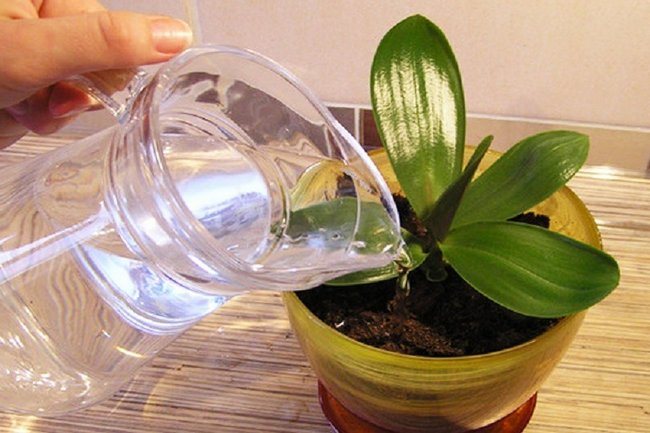

When can you use it?
Despite the harmlessness of succinic acid, terms of its application are quite strict... It is very important to lean on the drug mainly during the months of active growth of orchids - In spring and summer.
When the plant is in a state of sleep (winter) or is preparing for it (autumn), succinic acid is completely excluded from watering and treatments. The reason is clear: the tool is known as an effective measure to accelerate the growth and active development of any representative of the flora. If you interfere with the natural cycles, it will have a bad effect on the life of the flower.
An exception... In unsuitable seasons, succinic acid can be used, but strictly in smaller doses, in completely desperate situations when the plant needs to be urgently saved. For example, rhizomes affected by rot should be immediately cut off, and new ones should be germinated in a solution of succinic acid.
Instructions for use
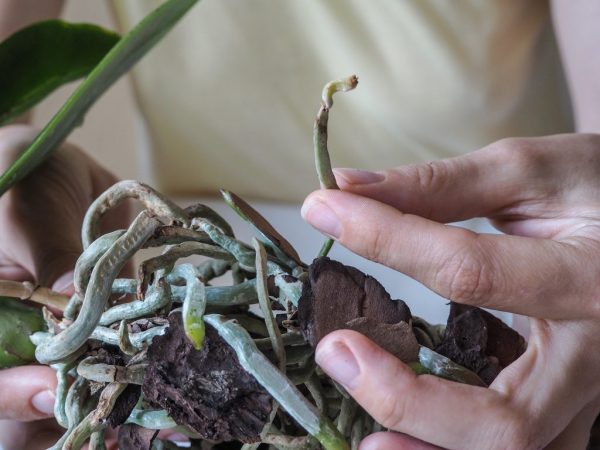

The drug must be used immediately after preparation.
Dilute the solution in a glass container, taking into account dosages.
The proportions can vary depending on the task at hand.However, an overdose is considered impossible - phalaenopsis will take as much substance as it lacks.
It is necessary to prepare a liquid product immediately before use due to the property of the active ingredient to decompose when interacting with oxygen.
If it is necessary to make the drug in advance, it is stored in a shaded place and in a tightly sealed container for 3 days.
We recommend that you first grind the tablet into powder, dilute with a small amount of liquid (about 200 ml), and then add water to the required volume.
For roots
Root treatment helps the orchid quickly adapt to new conditions and relieve stress after transplanting.
To achieve this goal, the roots are immersed in a fresh solution for 30 minutes at the rate of 1 tablet per 500 ml of liquid.
If the plant is in critical condition and needs emergency resuscitation:
- the roots are preliminarily examined, all injured and rotten segments are removed, the cut sites are treated with brilliant green or crushed activated carbon;
- then placed in the prepared solution for no longer than 4 hours. To prevent the plant from suffocating in the process, it is taken out of the composition every 30 minutes.
After the procedure, the phalaenopsis is dried for about 2-3 hours and transplanted into another pot, which, together with the soil, should be sterilized in advance.
After a few weeks, the first results will be noticeable - the root system will begin to actively increase the mass, new flower stalks will appear.
When watering
In this case, 1 g of succinic acid must be diluted in 1 liter of water, then irrigate the substrate with a watering can.
It is important that the liquid hits the soil in a thin, slow trickle.
It is better to carry out the procedure in the morning, so that by the evening the contents of the pot are dry enough.
Stop watering when water begins to seep through the drainage holes of the container. Then the moisture accumulated in the pan is poured out to avoid waterlogging. If, for some reason, the plant is in a pots that are not equipped with perforations at the bottom, the excess liquid is drained, holding the roots with your hand, through the top.
With the immersion method, a container with an orchid is placed a couple of times a month in a basin with a solution and kept for 30 minutes. During the period of rest or flowering, it is better to refrain from such processing.
For seeds
Acid is also used to stimulate germination and germination of seeds. The duration of the procedure is 12 hours, after which the material is thoroughly dried and embedded in a soil specially prepared for orchids.
Leaf processing
The composition has a good effect on the condition of the plant, if you wipe the leaves with it.
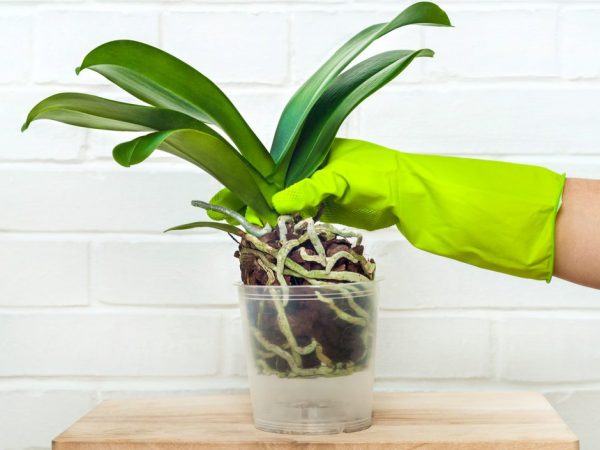

Acid has a beneficial effect on the root system
It is also allowed to process them in case of injury or yellowing. To do this, you need to prepare a more concentrated product: 1 tablet per 250 ml of water.
A lint-free cotton cloth (can be replaced with a cotton pad) is moistened in the liquid and passed over the entire surface from both sides.
The event is held daily in the morning / evening hours, until the natural turgor is restored, while avoiding the ingress of moisture into the center of the outlet.
Phalaenopsis responds well to spraying: 1 tablet is diluted in 0.5 liters of water. Young shoots are especially sensitive to such manipulations, in which growth activation is observed after the procedure.
For medicinal purposes, measures are carried out until the plant improves, for preventive purposes - once a week, to stimulate early flowering - until the peduncle is formed.
For resuscitation of orchids without roots
It is not uncommon for phalaenopsis to partially or completely lose its root system during improper care or adverse conditions.
There are several ways to fix the situation:
- Spray daily with strong essence: 4 tablets of amber per 1 liter of water.
- The plant is placed in a preparation, which is prepared in the same way as for a spray, and fixed so that the neck is not immersed in water. The fresh solution is topped up as it is absorbed, until the formation of new roots. It should be borne in mind that useful properties are preserved only for 2 days. On average, resuscitation will take about 2-3 months.
- Treat the base of the orchid with crushed acid, set it in the ground and systematically water and spray with the drug.
When the roots grow 5 cm, the cutting is placed in a new substrate.
For flowering
To stimulate flowering, the aerial part can be treated with a 0.1% amber solution by spraying. It is necessary to dilute 1 g of the substance in 1 liter of water.
Manipulations are performed several times a day. If you use the composition once every 3 weeks, it will accelerate the vegetation and growth of the plant.
It is noticed that after the treatment of phalaenopsis with amber, flowering occurs much faster, differs in abundance, larger buds and duration.
How to use
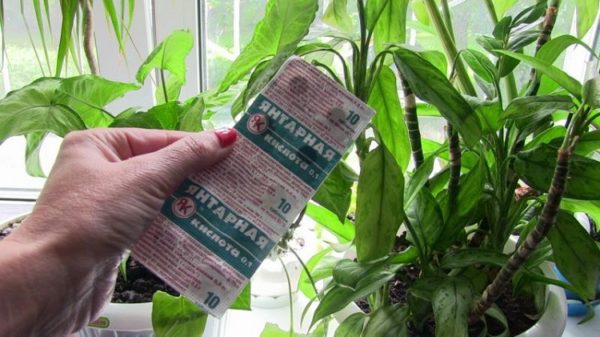

For inexperienced flower growers, YAK treatment will be an excellent assistant in the correct breeding of indoor plants. However, it has subtleties in application, knowing that even the most inexperienced grower in cultivation can grow spectacular orchids. The rules for quality processing are as follows:
- Root stimulation. It is necessary to prepare a solution and process the exotic before sending it to a fresh place. To saturate the roots with oxygen and stimulate engraftment, it is necessary to treat the root system with a composition of YaK. To do this, the roots must be soaked for a couple of hours.
- Watering a flower from a watering can. It is necessary to water at the root, carefully, without rushing. As soon as the liquid goes through the drains, there will be enough water. If the container is without drainage, it is important after 20 minutes. tilt it to remove excess moisture. It should be borne in mind that the sutra must be watered. But, the option of watering at other hours is possible, provided that there are no drafts in the room and the flower is protected.
- Wipe orchid leaves with succinic acid. This should be done by using a cotton wool disc with the drug. Treat only the green part of the flower. The acid should not penetrate into the base of the hardwood plates. Experienced growers do not advise leaving it on the foliage - there is no benefit. After 2 days, wipe the treated greens with cotton swabs soaked in clean warm water.
- If a flower culture does not receive full care, then during growth it loses its main root mass. To bring an orchid back to life, it must be watered with a spray bottle. However, this composition must be of high concentration. For one and a half liters of water, you need to apply 6 tab. Resuscitate daily, preferably in the morning. According to the instructions for use, a sprayer should be used. You can buy it at the hardware store. Overdose should not be feared. The flower will absorb from it only what it needs. In order for the treatment to give a positive effect, before each spraying of the orchid, you need to wipe the greens, removing the previous composition with a damp swab. Especially useful will be the use of YaK for new shoots. For preventive purposes, you can put an orchid without roots in the mixture made and keep it for no more than 30 minutes.
- Having processed the seeds, you can significantly improve their quality, speed up growth. To understand how to breed YaK and how much of it is needed for soaking, it is important to know how much seed is required. Traditional packaging requires half a tablet in half a liter of water. The seeds must be immersed in the mixture for 24 hours, and then dried perfectly. Treated seeds germinate faster. All these indications must be observed, then the orchid will bloom beautifully. Yak for indoor plants is a harmless biological medicine with unique qualities for plant culture.
Recommendation.
Professionals advise to apply the fertilizer once a month for prophylaxis.With frequent use as a fertilizer stimulating the growth, there is a risk of acidification of the soil. This should not be allowed.
Consequences of improper processing
If fertilizer is used incorrectly, the orchid can be harmed. To prevent this, it is necessary to strictly observe the processing time and concentration of the drug. You can keep the plant in good condition if you process it once a month.
The harm from succinic acid can occur when used during flowering. This will cause the flowers to fall off. This effect is associated with the fact that the plant will begin to grow actively, and all its forces will be thrown into the formation of roots and new leaves.
Resuscitation of a flower with rotten roots
It is also possible to restore an orchid with already rotten roots with the help of a biostimulant. Rotting usually starts from excess moisture. In this case, the plant may simply die if help is untimely. To restore an indoor flower, it is recommended to prepare a solution using two to four succinic acid tablets per liter of water. Moreover, if there are no roots left at all, then you can apply a cotton pad to the place where they should be located. Amber treatment is carried out three times a day until the roots appear. During the procedures, the roots should be left open, the orchid itself is above the container. You can moisten sphagnum moss with the resulting solution.
This procedure allows aerial rooting. And you can also revive the flower by simply soaking it in solution. Roots with rot should be removed, and those places where the roots are cut off are treated with brilliant green. They can be sprinkled with crushed coal. After that, an orchid with a rotten root must be put into the solution. The duration of the procedure is from 10 to 15 minutes. Such manipulations can be carried out daily until the roots begin to grow. Usually the entire regeneration procedure takes up to two to three months. But you can plant a plant in a pot earlier. It is best to transplant into a substrate containing sphagnum moss or coconut coir.
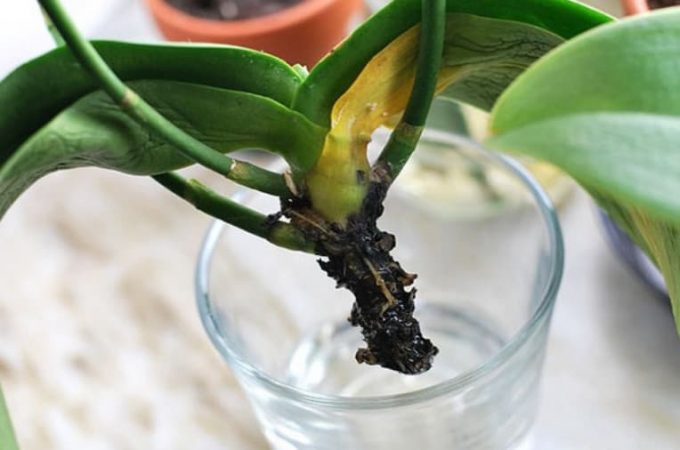

Amber processing of planting material
Those gardeners who are engaged in growing a flower from seed recommend improving germination by processing this biostimulant. Seeds are soaked for 12 hours before planting. After that, the planting material must be dried. Then the orchid seeds are planted in the soil prepared in advance.
Is the acid compatible with other agents
This drug can be used together with growth stimulants or vitamins. To care for the plant, you can use the following composition: two amber tablets, a glucose tablet, an ampoule of nicotinic acid and the same amount of ascorbic acid. Vitamins B 12 and B6 are additionally added to the mixture in an ampoule. The prepared tonic is used to wipe the leaves, use it to spray the flower. They can water the soil. It is best for them to process in the morning. The composition stimulates flowering and allows plant roots to develop.
Now read:
- How Chinese cabbage is grown outdoors
- Increased yield of potatoes using Dutch technology
- Choosing cucumbers for open ground according to your preferences
- Varieties, planting and care of perennial rudbeckia
About
Agronomist of the state agricultural enterprise "Garovskoye" of the Khabarovsk region of the Khabarovsk region.
The harm of the drug
Having decided to save the flower from death, flower growers often forget about simple recommendations for the use of the drug. Spray, water or keep the flower strictly at a favorable time for this. The product should be used in accordance with the recommended concentration.
For preventive purposes, the flower is treated every 30-60 days. In winter and autumn, you should not start such events. During the flowering period, succinic acid should be used with caution.Any mistake leads to shedding of flowering, and all the forces of the plant are distributed to the formation of the root system and leaves of the flower.


